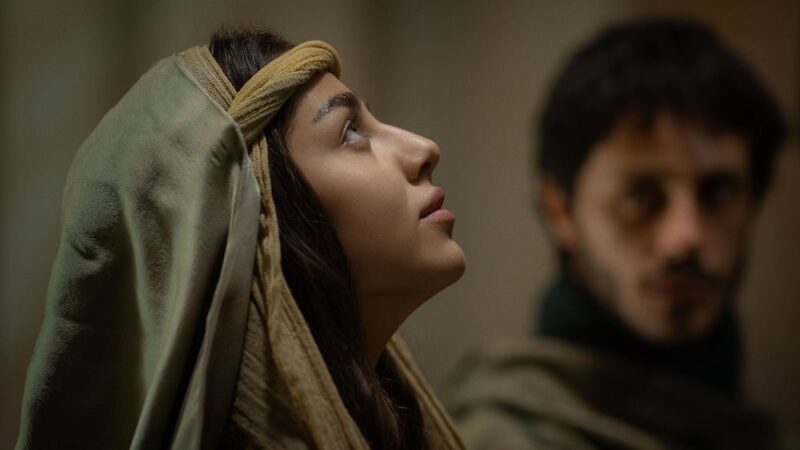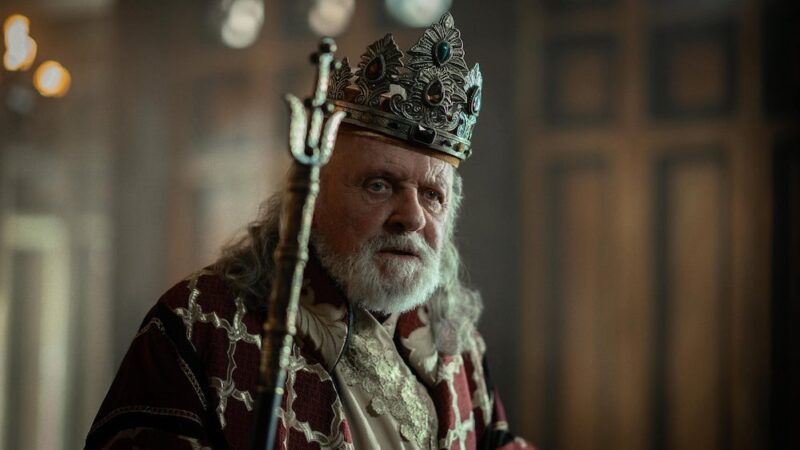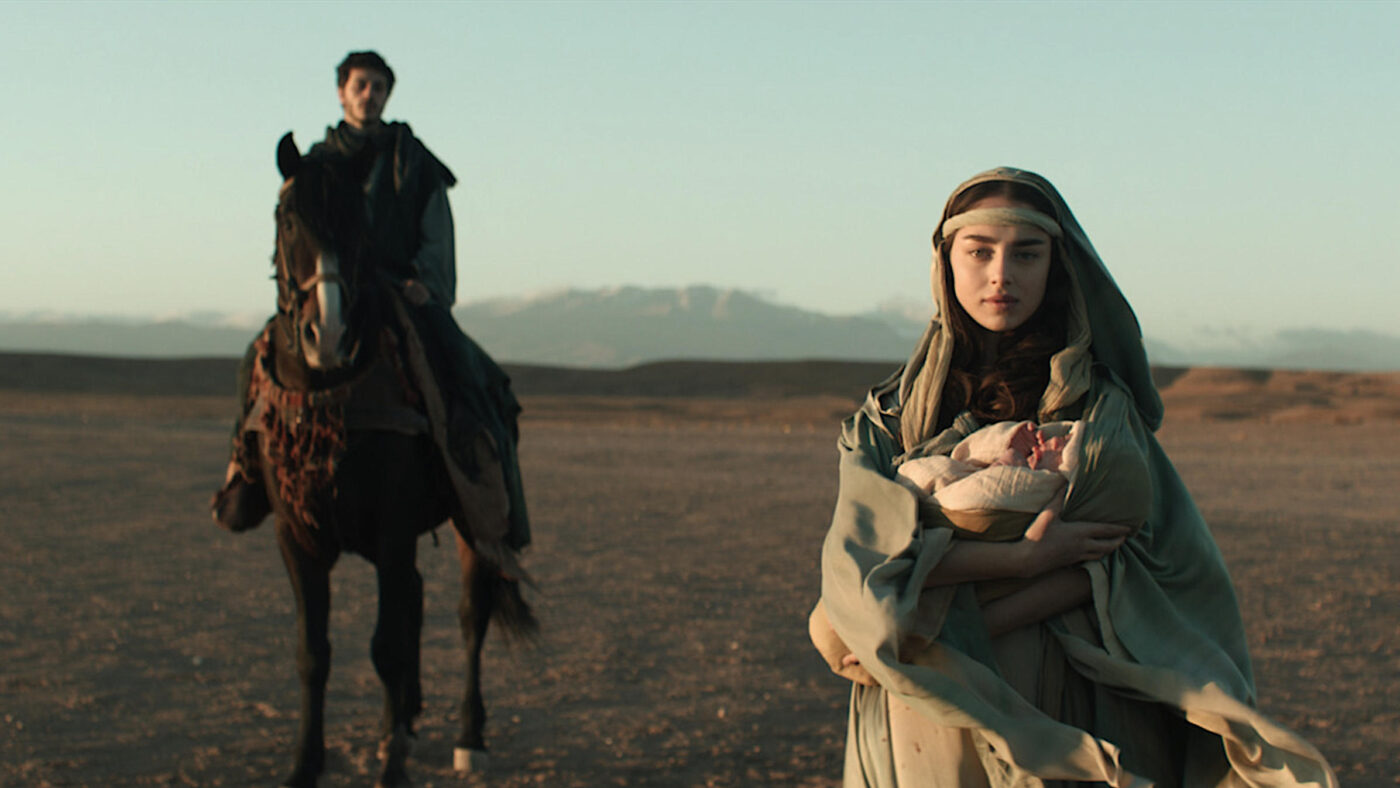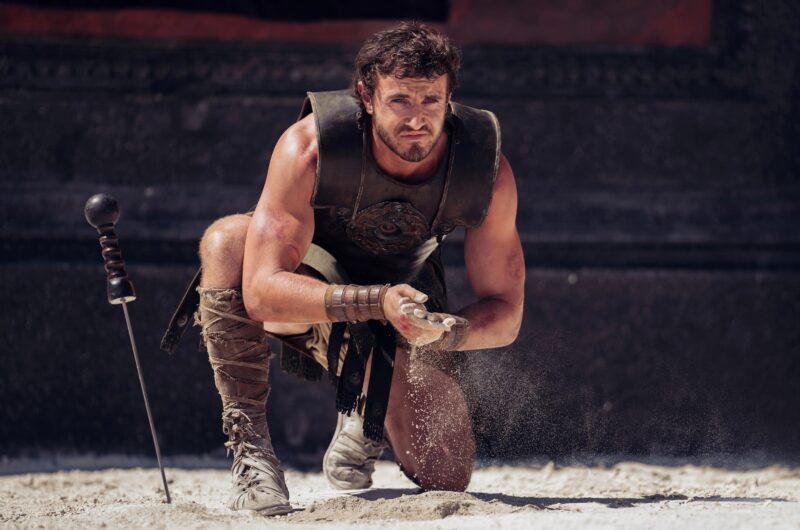“You may think you know my story. Trust me, you don’t,” says Mary at the very beginning of D.J. Caruso’s eponymous movie. And she’s right. Only two of the four canonical gospels give an account of Mary’s betrothal, of her pregnancy and of the birth and early childhood of Jesus, but they hardly agree on anything: in Matthew, the angel of the Lord appears to Joseph in a dream (Matthew 1:18-24); in Luke, the angel Gabriel appears to Mary (Luke 1:18-38). Only Matthew tells of the star of Bethlehem, the Magi of the East, the flight to Egypt and the massacre of the innocents. Only Luke tells of the “Visitation” (Mary visits her relative Elizabeth), the census, the angels appearing to the shepherds, the presentation in the Temple on the eighth day (with Simeon’s “song of thanks” and Anna, the prophetess).
Screenwriter Timothy Michael Hayes filled the gaps and turned to a non-canonical gospel, the Protoevangelium of James (2nd century) for the backstory: Mary’s parents, Anna and Joachim, Anna’s miraculous pregnancy, Mary sent to –and raised at– the Temple. But Hayes and Caruso proceeded to make significant changes: their Joseph is handsome 23-year-old Ido Tako, who falls in love with Mary at first sight. The apocryphal gospel’s Joseph, on the other hand, is an older widower with grown sons of his own. Their Mary (Noa Cohen) begins her service at the Temple as a girl and is cast out when discovered pregnant; James’ Mary is sent there at three and leaves at twelve because of her ‘unclean’ menstrual blood…

‘Mary’ • Photo courtesy Netflix.
The problem with Mary isn’t that the filmmakers took liberties with the chronology and the source materials (already fictionalized). And plenty of liberties they took: Anna is blonde; Herod looks like a character drawn from The Lord of the Rings, Gabriel appears to Anna (twice), to Joachim, to Joseph: by the time he greets Mary, we’re no longer awed. Mary and Joseph travel from Nazareth to Bethlehem not because of the census (James and Luke 2:4-6), but because they’re hunted by the zealots and the Romans. Joachim is killed, Lucifer tempts Mary three times, Joseph fights with the Romans, the prophetess Anna (barely mentioned by Luke) is promoted to Mary’s mentor at the Temple, both Elizabeth and Mary’s mother help the Virgin deliver Jesus (replacing the two midwives in James)…
No. The problem with Mary is that, while making room for the fictionalized (action-packed) events we didn’t need, it omits what little the canonical gospels do tell us, forgoing the sense of the sacred they elicit. In the “Nativity” sequence, there’s no angel proclaiming to the shepherds “good news of great joy that will be for all people” (Luke 2:8-14). In the “Visitation” chapter, Elizabeth (Hilla Vidor), pregnant with John the Baptist, feels her baby “leap” in her womb and so greets Mary: “Blessed are you among women.” But the filmmakers skip over Mary’s “Magnificat” (Luke 1:46-55): “My soul proclaims the greatness of the Lord; my spirit rejoices in God my Savior for he has looked upon his handmaid’s lowliness…” In the “Annunciation” sequence (Luke 1:26-38), we hear most of Gabriel’s announcement, but Mary’s response is truncated from Luke’s “Behold I am the handmaid of the Lord. May it be done to me according to your word” to screenwriter Hayes’ “Let it be ME” (which shifts the focus of the narrative and not only from a theological standpoint).
“I embarked on this journey,” said Caruso, “to create a film that presents her in her most human and relatable form (…) To portray Mary as someone we can connect with, not just as a saint, but as the young woman we all recognize before her sanctification.” Yet, none of this matters: stripped of the shepherds, of the “Magnificat” and of the Virgin’s abandonment to God (“Ecce ancilla Domini”), Caruso’s Mary loses its spiritual core. It becomes a haphazard coming-of-age epic sprinkled with a touch of romance, a few elements of fantasy (Gabriel and Lucifer) and too many of a clichéd thriller: a villain (Herod), a “murderous pursuit” (as Netflix calls it) and a sexy action hero (Joseph).

Anthony Hopkins in ‘Mary’ • Photo courtesy Netflix.
“The greatest story ever told” isn’t told here at all. Inevitably, with some 21 executive producers (including televangelist Joel Osteen) and 10 co-executive producers. And we can’t help but wonder: why was Mary made? Was it hoping to ride on the coattails of The Chosen? If so, Hayes’ script falls short, even in comparison with other faith-based movies (with mixed reviews): Hardwicke’s The Nativity Story (2006), Zeffirelli’s evergreen Jesus of Nazareth (1977) and a plethora of biblical epics.
Some of the flashiest costumes by Tina Kalivas –particularly the priests’ and Mary’s– belong in an operetta; Gavin Struthers’ cinematography and James Merifield’s production design are decorative at best, banal at worst. Really? The “Presentation of Mary” in the Temple, the “Visitation,” the “Annunciation,” the “Mystical Nativity,” the “Adoration of the Shepherds” and the “Epiphany” have all been depicted by the foremost artists for centuries. You’d think the filmmakers, even if unable (or unwilling) to approach the mystery, would be at least inspired by the artists who did approach it, Beato Angelico, Giotto, van Eyck, Botticelli, Piero della Francesca, Leonardo, Raphael, Lotto, Correggio, Rubens, Chagall… Instead, they settled for young Mary chasing a butterfly in the fields and the holy family riding a horse through fire.






